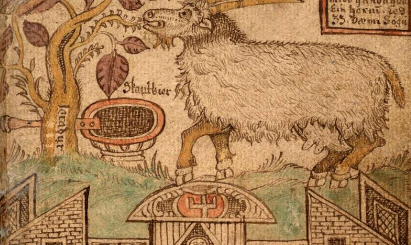10 Major Norse Gods and Goddesses in Norse Mythology

Norse gods
The Norse pantheon had a wide array of deities and heavenly beings that controlled different sections of the nine realms. The article below presents the origins, symbols and powers of the 10 major gods and goddesses in Norse mythology:
ODIN
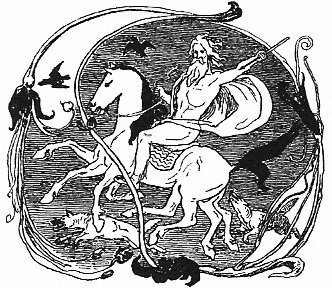
Norse gods – Odin | The one-eyed god and All Father Odin riding Sleipnir
Commonly called “the All Father” or the One-eyed raven god, Odin was the king of the gods in Norse mythology. After he and his army of Aesir gods vanquished the Vanirs* during the Aesir-Vanir war, Odin became ruler of the Aesir gods and Asgard (the heavenly realm of the gods).
Odin was an extremely powerful deity, possessing a range of powers in sorcery, war, poetry and death. It has been stated that he was expertly skilled at reading and understanding the runic alphabet (ancient Germanic alphabets).
His sphere of control was so vast that he was associated with almost everything in Norse mythology. As a matter of fact, he had more than thousand names or epithets to describe his magnificent powers and vast knowledge and wisdom. It was believed that Odin sacrificed one of his eyes in order to gain greater knowledge and wisdom.
Odin’s spear, Gungnir, was the most powerful weapon in the realm. He was commonly associated with his horse (Sleipnir, the 8-legged horse), ravens (Huginn and Muninn) and wolves (Geri and Freki).
Generally, the goddess Frigg was considered the wife of Odin. He had several children, including Thor and Baldr. In the spectacular hall of Valhalla (Odin’s dining room), Odin frequently threw large feasts for his family and the Valkyries (brave women soldiers) and the brave dead men (einherjar) that had died in battles.
Norse myths state that Odin is fated to die at the hands of the fierce wolf Fenrir (Loki’s son) during Ragnarök (the demise of the gods). Ragnarök refers to end of the old era and the ushering in of new era with a new generation or crop of gods and celestial beings.
THOR
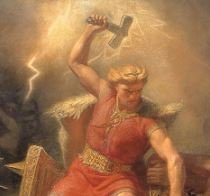
Thor wielding his hammer, Mjölnir
Thor, the hammer god, was also known as the god of lightning, thunder and war. He was probably the most renowned of Odin’s children. Best known for his physique and strength, Thor often went on several adventures that saw him knock down giants (Jötunn) and dwarfs. His primary symbols were hammer and lightning. The name of his hammer was Mjölnir, which was one of the strongest weapons ever forged by the dwarfs.
Although Thor was one of the most powerful gods in Norse mythology, he sometimes allowed his anger and temper get the better of him, picking up unnecessary fights in all the nine realms.
Thor’s arch enemy was usually his brother Loki (the trickster god), who often outsmarted him with wits and trickery. Thor’s favorite past time was drinking and sleeping with mortal women.
FREYA (FREYJA)
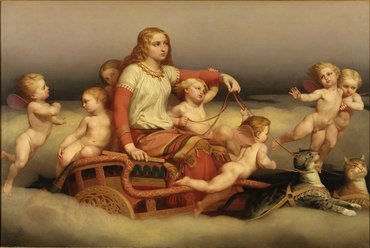
Norse goddess Freya
Freya was the Norse goddess of magic, love, fertility and lust. An expert in seidr magic, Freya was mostly the go-to deity when it came to things about magic. Unlike other Norse gods, Freya was quite a calm and level-headed deity. In Old Norse language, her name translates into ‘lady’ or ‘mistress’.
Freya (or Freyja) was often depicted riding a chariot that was pulled by her two powerful cats. And in most cases, the goddess Freya had her boar Hildisvini accompanying her.
Freya had two daughters – Gersemi and Hnoss – with her husband Óðr. Her family were generally considered part of the Vanir, the prophetic Norse deities who specialized in fertility, wisdom and health.
The goddess Freya was the ruler of Fólkvangr, a place where half of the brave the fighters that died in a battle go to. The remaining half was ferried by Odin’s Valkyries to Valhalla. According to a 13th century prose writer Snorri Sturluson, Sessrúmnir (‘seat-room’) was a hall in Freya’s heavenly field Fólkvangr. Similar to Odin’s hall Valhalla, Sessrúmnir hosted half of the warriors that died in battles.
Over the centuries, Freya was sometimes known as Hörn (flaxen), Gefn (the giver), Valfreyja (Lady of the Slain), Vandis (the dis/soul of vanir) and Sýr (sow). And whenever her husband Óðr was away, Freya cried tears of red gold. Due to the similarities in terms of powers and attributes, Freya has often been associated with the goddess Frigg.
LOKI
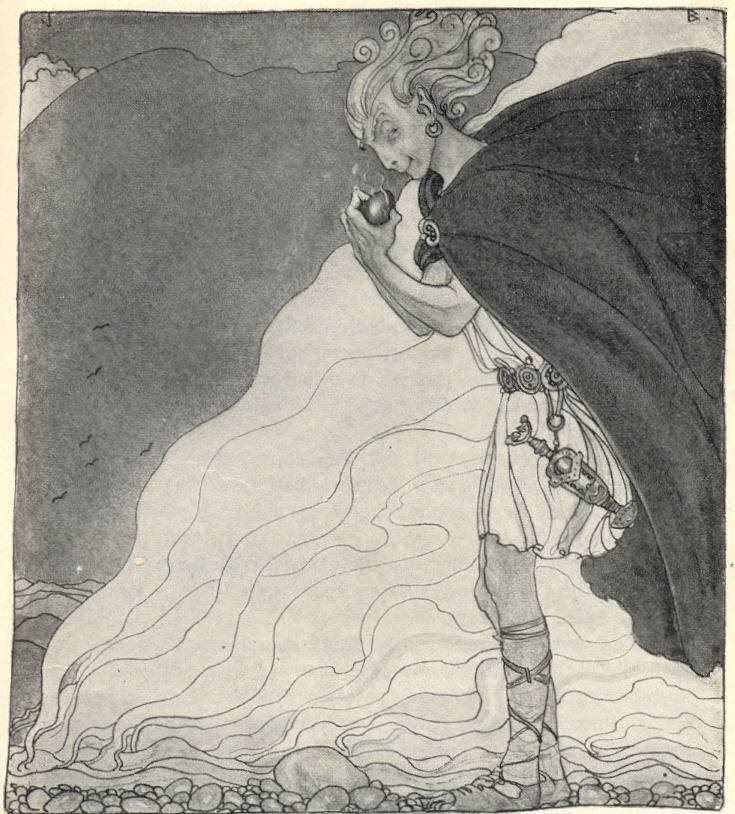
Loki
Another very important god in Norse mythology was Loki, the trickster god. He was an extremely intelligent and cunning deity. He was always one step ahead of the other gods. This often infuriated the gods, especially his half-brother Thor.
Another very useful power in Loki’s arsenal was his shapeshifting abilities. This power of his came handy whenever he pulled tricks on the gods. His dishonesty and trickery usually got him into hot waters, making him one of the most despised gods in Asgard. Loki was responsible for the death of Baldur after he fashioned out an arrow from a mistletoe plant.
In Greek mythology, his equivalent would most likely be the Titan trickster Prometheus, the god who gave mankind fire.
FREYR
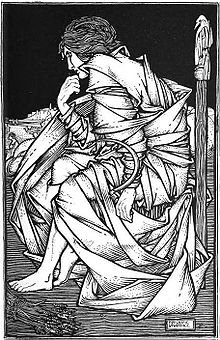
The god Freyr was a member of the Vanir, a powerful group of gods with prophetic and healing powers. Freyr was revered as the god of fertility and reproductive health in men. He was also associated with tranquility, peace and wealth. Many Norse accounts claim that he was the twin brother of the goddess Freya. This claim will therefore make Freyr the son of Njord (wind and sea god – leader of the Vanir).
Freyr’s symbols were generally a sword and a dark boar. It was believed that his sword had the ability to fight on its own. Compared to other Norse gods, Freyr was generally a benevolent god. This is why many sailors prayed to him to grant them safe voyage. Additionally, he was seen as the bringer of sunshine and good weather conditions.
HEIMDALL
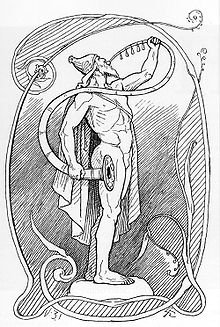
Heimdallr
Heimdall (Heimdallr) was an Aesir deity that stood guard at the entrance or passages leading to the various realms (i.e. nine realms). He earned this job due to his sharp eyesight. Many Norse myths claim that nothing escaped the eyes of Heimdall. He was also very strong and always ready to pounce on anyone or deity that sought to break into Asgard.
According to the prophecy in the myths, Heimdall was destined to sound the horns of Gjallarhorn in order to inform Asgardian gods about Ragnarök (the end of the gods). Due to this, Heimdall was held in high regard by many Aesir gods and goddesses.
FRIGG
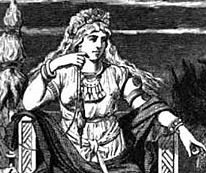
Frigg – Queen of the Norse gods
Worshipped as the queen of Asgard, Frigg was the beautiful wife of Odin. She was an Aesir goddess of marriage, childbirth, wisdom and prophecy. She was highly revered due to her calm demeanor and wisdom. In Asgard, Frigg was only second to Odin, and only Frigg was allowed to sit on Odin’s throne (Hliðskjálf). The throne is believed to allow the occupant to gaze into everything that occurred in the nine realms.
The goddess Frigg bore a number of children for Odin. The most famous of those children were Baldr. It was believed that Frigg’s gift of prophecy made her know in advance that Baldur would die. She also knew in advance how Ragnarök (the end of the gods) would play out.
Frigg can be seen as the equivalent of Greek goddess Hera, obviously with the exclusion of Hera’s vindictive traits!
BALDR (Baldur)

Baldr
Another very important Aesir god in Norse mythology was Baldr (Baldur), the son of Frigg and Odin. Baldr the Shining, as he was commonly called, was the sweetheart of Asgard. Everyone in the realm loved Baldr. Not only did he ooze out confidence, Baldr possessed a calm demeanor that perfectly complemented his good looks and wisdom.
Revered for his wisdom, Baldr often served as a peacemaker in Asgard. He also mediated conflicts between Asgardian gods and mankind. Baldr’s tragic death triggered the events that eventually led to Ragnarök, the doom of the gods.
Due to his peace loving nature, Baldur has often been associated with Nerthus, the Germanic goddess of peace and abundance. Baldur’s death, which was engineered by the trickster god Loki, brought forth Ragnarök – the end of the world.
Baldr’s appeal and charm can be equated to some of the traits possessed by the god Apollo in the Greek pantheon.
TYR
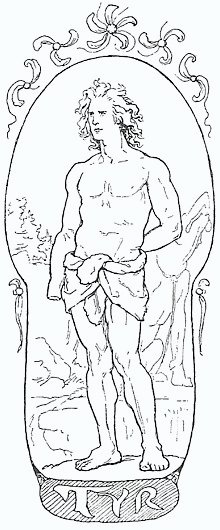
Tyr – Norse god of war, justice and truth
The ancient Greeks had Ares. The ancient Romans had Mars. And the ancient Egyptians had Seth (Set). In Norse mythology, however, the title of god of war went to none other than the god Tyr. Unlike his counterparts in other pantheons, Tyr was actually a good and morally just god. He resorted to war only when it was absolutely necessary. He was not seen as a deity who basked in wanton chaos and destruction. On the contrary, he was an advocate for justice and truth.
Bravery was also another important trait Tyr possessed. His bravery was evident when he put his life on the line to save his fellow gods as they battled the powerful wolf Fenrir (son of Loki). Tyr even lost one of his arms in the process. Owing to stories of this nature, Tyr was highly revered among the early Germanic people and tribes.
IDUN
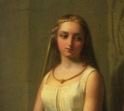
Norse goddess Idun
Seen in similar light as the Greek goddess Aphrodite, Idun was the Norse goddess of beauty, youthfulness and fertility. She was extremely knowledgeable in elements and foods that had the ability to keep the gods young and glowing. Her secret elixir to perpetual immortality was contained in her magical apples, which she gave to the gods on Asgard.
Owing to her importance, Idun was a hotly sought-after goddess. According to one Norse myth, a rogue giant once kidnapped Idun in order to get his hands on her apples.
Other honorable mentions in Norse mythology are:
- GEFJON: Goddess of ploughing and agriculture in general. Some myths stated that Gefjon single handedly plowed Lake Mälaren in Sweden. She then used the soil to construct the island of Zealand in Denmark. Much of what we know about Gefjon appears in the Poetic Edda, a 13th century compilation of poems that drew from a host of old Norse stories.
- NJÖRÐR (Njord/Njorth) – a Vanir Sea and wind god regarded as the father of the goddess Freyja and god Freyr. It was believed that he was in an unhappy marriage with Skade (Skaði), the goddess of hunting, mountains and skiing. Njord was generally seen as the chief of the Vanir gods.
- NERTHUS: She was the Norse goddess of peace, happiness and wealth.
*The Vanir referred to celestial beings and gods most known for their healing, wisdom and prophetic powers


